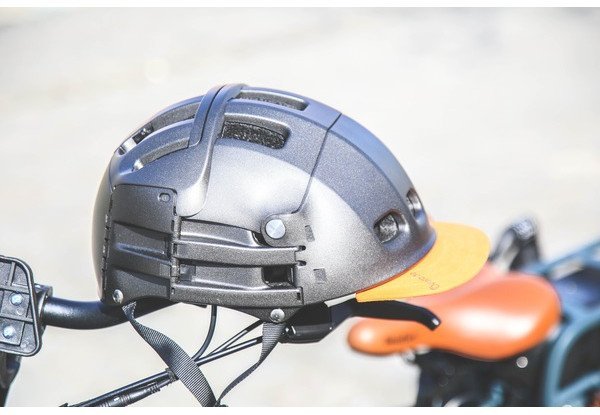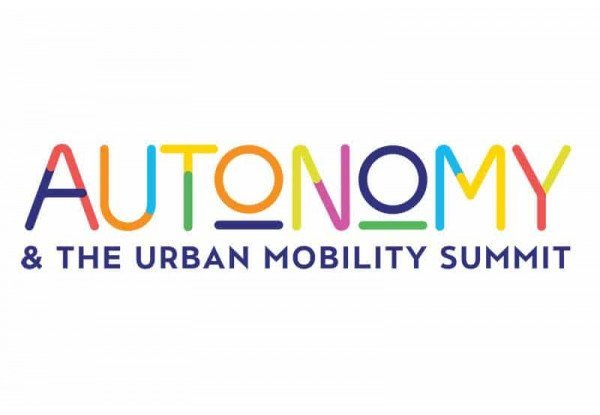
From the sausage bicycle helmet to the folding bicycle helmet, the great history of the bicycle helmet
The history of the bicycle helmet goes back to the post-war period. Although the helmet has become an essential part of a cyclist's equipment, this was not always the case. Until the 1980s, few riders adopted them, preferring a simple cap. Fatal crashes, innovations and the quest for speed gradually imposed its presence on professionals and amateurs alike. The history of the bicycle helmet in France and Europe is linked to the evolution of cycling and our concern for protection in a more urbanised world.
Sports cyclists were the forerunners (sometimes reluctantly) of the bicycle helmet
Worn until then only by a few track riders, the sausage bicycle helmet was adopted by the cyclo-cross rider Jean Robic after he had a serious fall on the cobbles of the "Enfer du Nord". This accident during the Paris-Roubais race convinced him never to leave his helmet, which gave him the nickname "leather head". In 1945, the helmet was made from padded leather straps. Track riders were the first to wear it, while road riders only wore it when weather or road conditions dictated (rain, cobbles, cyclo-cross). It was not until the 1980s that innovations were introduced. In 1985, the Italian Francesco Moser tackled the one hour world record. Although he surrounded himself with specialists to design the ideal equipment to win the event, he chose a tight-fitting cap to break the hour record in Mexico. A surprising choice which shows that specialists are now focusing on the Cx coefficient (coefficient of penetration in the air) to gain a few precious seconds.
In the USA, riders abandoned the sausage bicycle helmet in the mid-1980s for the Bell helmet. The American company that invented the full-face helmet took an interest in cycling. Technological advances allowed the development of a more comfortable and aerodynamic helmet made of expanded polyurethane. This did not stop riders from calling them "pressure cookers" because they were so hot. The Italian Francesco Moser was the first rider to break the one-hour record in Mexico with a streamlined helmet. Despite this, the helmet is still not unanimously accepted by the professionals. While the American cyclists led by Greg Lemond took on the races with helmets and goggles, the European teams were more reticent, with the exception of the GDR riders who were among the first to use them in competition.
In 1991, the UCI (International Cycling Union) tried to impose the wearing of a helmet on all professionals for safety reasons. This did not go smoothly. Francis Moreau, who was disqualified for taking off his helmet during a stage of the Paris-Nice race, was supported by the riders in the peloton who decided to ride without helmets to protest against this decision. The same year, the Tour de France peloton went on strike to protest against the new rule. Faced with this protest, the UCI backed down. On the other hand, the wearing of helmets remained compulsory in other European countries. The cycling organisation penalised Jacky Durand in 1996. The rider took off his helmet during a stage of the Tour Charleroi-Liège and the sanction was imposed.
In 2003, the death of Kazakh rider Andrei Kivilev after a fall put an end to the UCI's hesitations. The medical report was clear. If the rider had been wearing a helmet, the skull injuries would have been less dramatic. This eighth fatal crash in twenty years of professional cycling was one too many. In 2003, the UCI decided to make it compulsory to wear a helmet in the Tour de France, with the exception of the final climbs. In 2005, this last exception was definitively swept away.
What kind of bicycle helmet and for what purpose?
The history of the bicycle helmet is closely linked to the evolution of the sport in our society. In the 1950s, road traffic was not as heavy as it is today. There were fewer cars and traffic conditions were easier for cyclists. The little queen lives up to her name. It reigned in the streets of cities where adults and children pedalled happily without helmets, as period photos show. Moreover, many disciplines such as mountain biking and BMX do not exist or exist only to a limited extent, and the notion of safety and accident prevention is not as imperative.
The practice of cycle touring, mountain biking or urban cycling is at the origin of the latest developments in bicycle helmets and the democratisation of their use.
Mountain bike helmet
Mountain bike helmet models are usually equipped with a visor to protect against branches, splashes and the changing light conditions encountered on forest trails. The back part covers more of the skull and mountain bikers have a choice of helmet models. Enduro and downhill riders will prefer full-face helmets.
Helmet for EAB and electric bicycle
To ride a EAB (electrically assisted bicycle), a standard bicycle helmet is sufficient. It simply has to carry the NF EN 107 label. However, for "speed bikes" capable of reaching 45 km/h, it is preferable to wear a motorbike helmet. In France, these ultra-fast electric bikes are classified as motorised vehicles and require a ECE-R 22.05 approved helmet.
Road bike helmet
A road bike helmet should cover the head from the forehead to the neck to protect the spine in the event of a fall. This type of bicycle helmet can have an internal structure made of polycarbonate, carbon or titanium. Road bike helmet designers focus on ventilation and aerodynamics. This type of bicycle helmet can benefit from an internal structure in polycarbonate, carbon or titanium for better protection. This system prevents the helmet from disintegrating in the event of a violent impact and allows for greater ventilation without compromising the strength of the helmet.
Helmets for commuters and city bikes
These city bike helmets are designed for daily use in built-up areas. They are designed to be practical and are equipped with the features found on road and mountain bike helmets, such as ventilation channels and visors.
Several innovations have appeared on the market to facilitate the daily life of the growing number of cyclists on the roads.
Combining safety and practicality is not always easy. Overade has succeeded in doing so by marketing a folding helmet, the PLIXI FIT. It can be folded in two movements, much to the delight of cyclists who often arrive at their destination in an overcrowded state.
Its folding function allows it to be divided by three and therefore to be easily slipped into a rucksack or a locker.
The bicycle lends its helmet to other forms of mobility
Alongside the various cycling disciplines, two-wheelers have developed. The search for alternative means of transport to the car, traditional public transport or walking has brought the scooter, with or without a motor, back into fashion. Until the end of the 20th century, it was reserved for children, but now it has conquered adults in cities. The same goes for skateboards and rollerblades. Economical, ecological and fun, they are perfect for journeys of less than a kilometre. However, all of them require a helmet to make them safer in the city. Fans of these soft mobility means equip themselves with bicycle helmets whose versatility is well suited to these multiple means of travel.
The bicycle helmet: an increasingly clever multi-faceted accessory
If you put a flanged helmet, a streamlined helmet, a 2020 Tour de France rider's helmet, a mountain bike helmet and a folding city bike helmet such as the PLIXI FIT model in front of you, you will immediately realise the progress and changes that this accessory has undergone in less than a quarter century. Commuters, urbanites and anyone who rides a city bike to work, to the shops or to get around the city appreciate a helmet that protects them while taking advantage of all the advances permitted by technological progress.
The latest generation of connected bicycle helmets with turn signals allow you to signal changes of direction without taking your hands off the handlebars. A very clever and practical system when travelling in urban areas. Simply press the button on the handlebar to activate the horn. The connected smart helmets include lighting and indicators, but also offer the possibility of communicating or consulting applications to make your journey easier thanks to a Bluetooth link. This latest range of bike helmets is no match for the advanced helmets available for motorbikes.
Bicycle helmets are increasingly being designed as customisable objects or as part of a look. If you like a sportswear or casual chic look, you can opt for the vintage lines of a bowl helmet, while if you prefer a more sporty, contemporary style, you can choose a helmet with vents and a trendy colour that can be customised, like the professional teams, by applying stickers.
The bicycle helmet, in addition to being an object to improve safety, has become a way to assert oneself. Adopted by more and more cyclists, it continues to accompany the great revolution in urban mobility while continuing its aesthetic and technological revolution. Long shunned in France, the bicycle helmet, which is compulsory for children and during competitions, has won over reluctant cyclists by becoming an ultra-practical cycling accessory anchored in its time.



